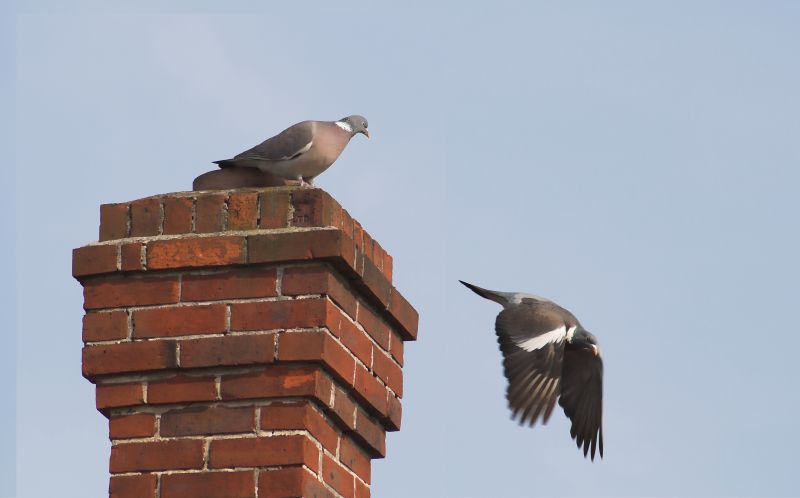Top-Rated Products for Managing Chimney Bird Nests and Invasions
Choose from the leading products that assist in removing birds and preventing future nesting in your chimney.
 Chimney bird removals can be a challenging task for homeowners and property managers alike. Birds often seek refuge in chimneys for nesting, which can lead to blockages, unpleasant odors, and potential fire hazards. Selecting the right products for bird removal not only helps in safely deterring birds but also ensures the chimney remains functional and free from debris. Effective removal solutions should be humane, easy to install, and durable enough to withstand weather conditions. Additionally, considering products that facilitate ongoing prevention can save time and effort in the long run.
Chimney bird removals can be a challenging task for homeowners and property managers alike. Birds often seek refuge in chimneys for nesting, which can lead to blockages, unpleasant odors, and potential fire hazards. Selecting the right products for bird removal not only helps in safely deterring birds but also ensures the chimney remains functional and free from debris. Effective removal solutions should be humane, easy to install, and durable enough to withstand weather conditions. Additionally, considering products that facilitate ongoing prevention can save time and effort in the long run.
Top Overall Option
Chimney Bird Guard Mesh
A durable mesh barrier designed to fit securely over chimney openings, preventing birds from entering while allowing for proper ventilation. Its sturdy construction withstands weather conditions and is easy to install, making it a versatile choice for ongoing bird deterrence.
Types of Products For Chimney Bird Removals
Mesh Chimney Caps
Protects chimney openings with a mesh cover that allows smoke to escape while keeping birds out.
Bird Spikes
Install on chimney ledges and edges to prevent birds from landing or nesting.
Deterrent Sprays
Repellent sprays that discourage birds from approaching or nesting in chimneys.
Sonic Bird Repellers
Devices that emit sounds to deter birds from nesting near chimneys.
Physical Barriers
Flexible or rigid barriers that block access points to prevent bird entry.
Chimney Caps with Bird Guards
Caps equipped with built-in bird guards for comprehensive protection.
Decoy Predators
Fake predators like owls or hawks to scare away nesting birds.
Electric Bird Repellents
Low-voltage devices that deliver mild shocks to discourage birds from landing.
Nesting Deterrent Devices
Specialized devices that prevent birds from building nests in chimneys.
Chimney Flue Covers
Covers that seal off the flue opening to prevent bird entry while allowing venting.
Popular Choices
Widely used to prevent birds from entering chimney openings while allowing smoke to vent.
Commonly installed on ledges and edges to deter perching and nesting.
Popular for their humane approach to discouraging birds without physical barriers.
Chosen for their combined protective features, suitable for various chimney types.
Effective in preventing nesting in hard-to-reach areas of chimneys.
Often used as visual deterrents to scare away nesting birds.
Gaining popularity for their non-invasive approach to bird deterrence.
Flexible barriers that are easy to install and remove as needed.
When choosing products for chimney bird removal, it is important to evaluate their safety features, ease of use, and compatibility with different chimney types. Some products are designed to be temporarily installed during nesting seasons, while others offer permanent solutions. Proper installation and maintenance are key to preventing future bird intrusions, so selecting adaptable and reliable products is essential. The goal is to create an environment that discourages birds from nesting without causing harm or discomfort.
The market offers a wide range of options, from simple physical barriers to more sophisticated deterrent devices. Many products are designed to be discreet and minimally invasive, preserving the aesthetic appeal of the property. It’s also beneficial to consider products that require minimal maintenance and are resistant to weather damage. By carefully selecting the right tools, property owners can effectively manage bird intrusions and maintain a safe, functional chimney system.
Key Buying Considerations
- Compatibility with your chimney type and size
- Material durability and weather resistance
- Ease of installation and removal
- Humane and safe for birds and residents
- Ventilation requirements to ensure proper airflow
- Long-term maintenance needs and costs
- Aesthetic impact on your property
- Effectiveness in deterring various bird species
- Ability to withstand local climate conditions
- Availability of replacement parts or accessories
- Compliance with local regulations or guidelines
- Customer reviews and product ratings
- Warranty or satisfaction guarantees
- Ease of cleaning and upkeep
- Cost and value for the features offered
